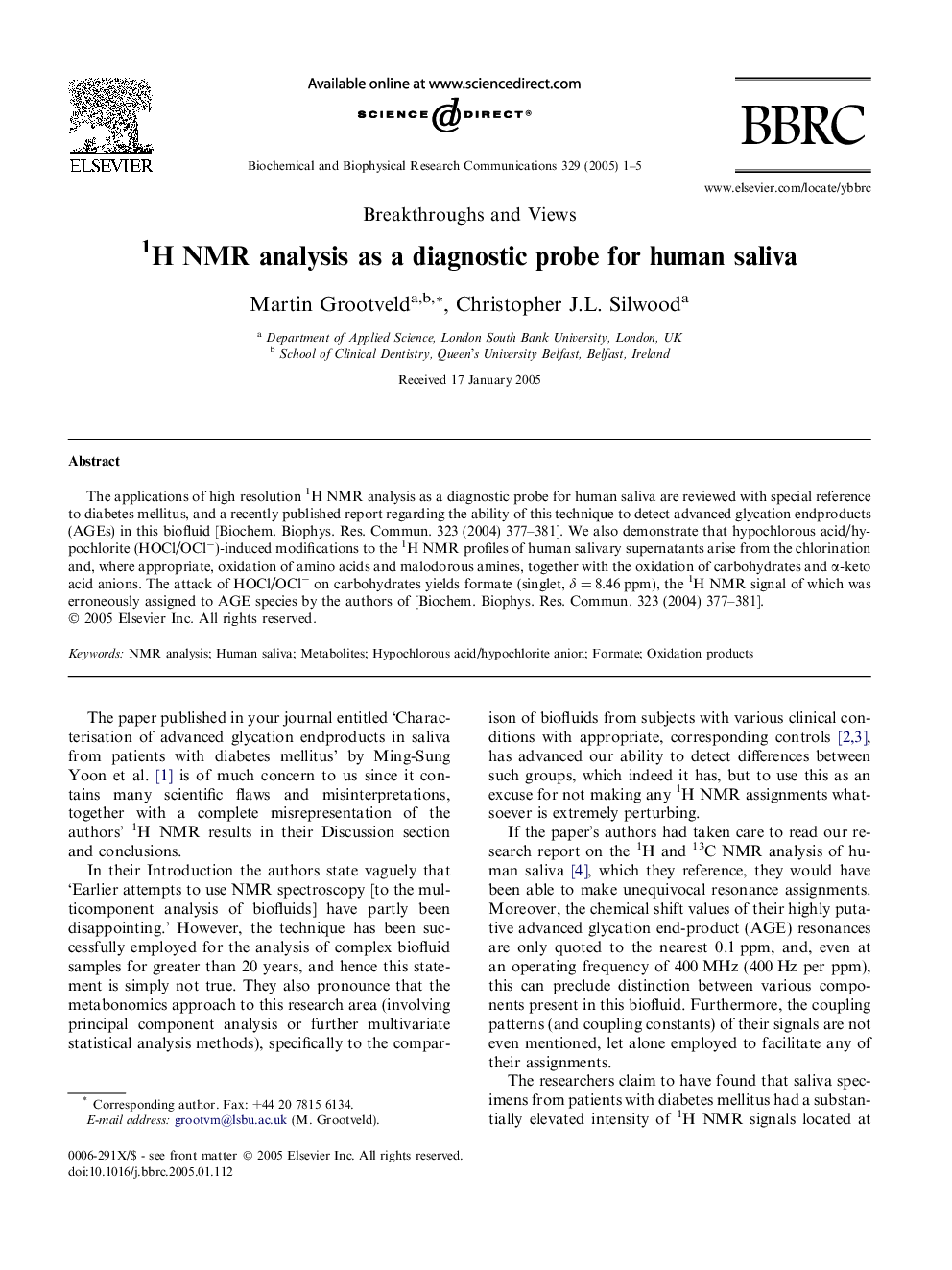| Article ID | Journal | Published Year | Pages | File Type |
|---|---|---|---|---|
| 10771699 | Biochemical and Biophysical Research Communications | 2005 | 5 Pages |
Abstract
The applications of high resolution 1H NMR analysis as a diagnostic probe for human saliva are reviewed with special reference to diabetes mellitus, and a recently published report regarding the ability of this technique to detect advanced glycation endproducts (AGEs) in this biofluid [Biochem. Biophys. Res. Commun. 323 (2004) 377-381]. We also demonstrate that hypochlorous acid/hypochlorite (HOCl/OClâ)-induced modifications to the 1H NMR profiles of human salivary supernatants arise from the chlorination and, where appropriate, oxidation of amino acids and malodorous amines, together with the oxidation of carbohydrates and α-keto acid anions. The attack of HOCl/OClâ on carbohydrates yields formate (singlet, δ = 8.46 ppm), the 1H NMR signal of which was erroneously assigned to AGE species by the authors of [Biochem. Biophys. Res. Commun. 323 (2004) 377-381].
Related Topics
Life Sciences
Biochemistry, Genetics and Molecular Biology
Biochemistry
Authors
Martin Grootveld, Christopher J.L. Silwood,
